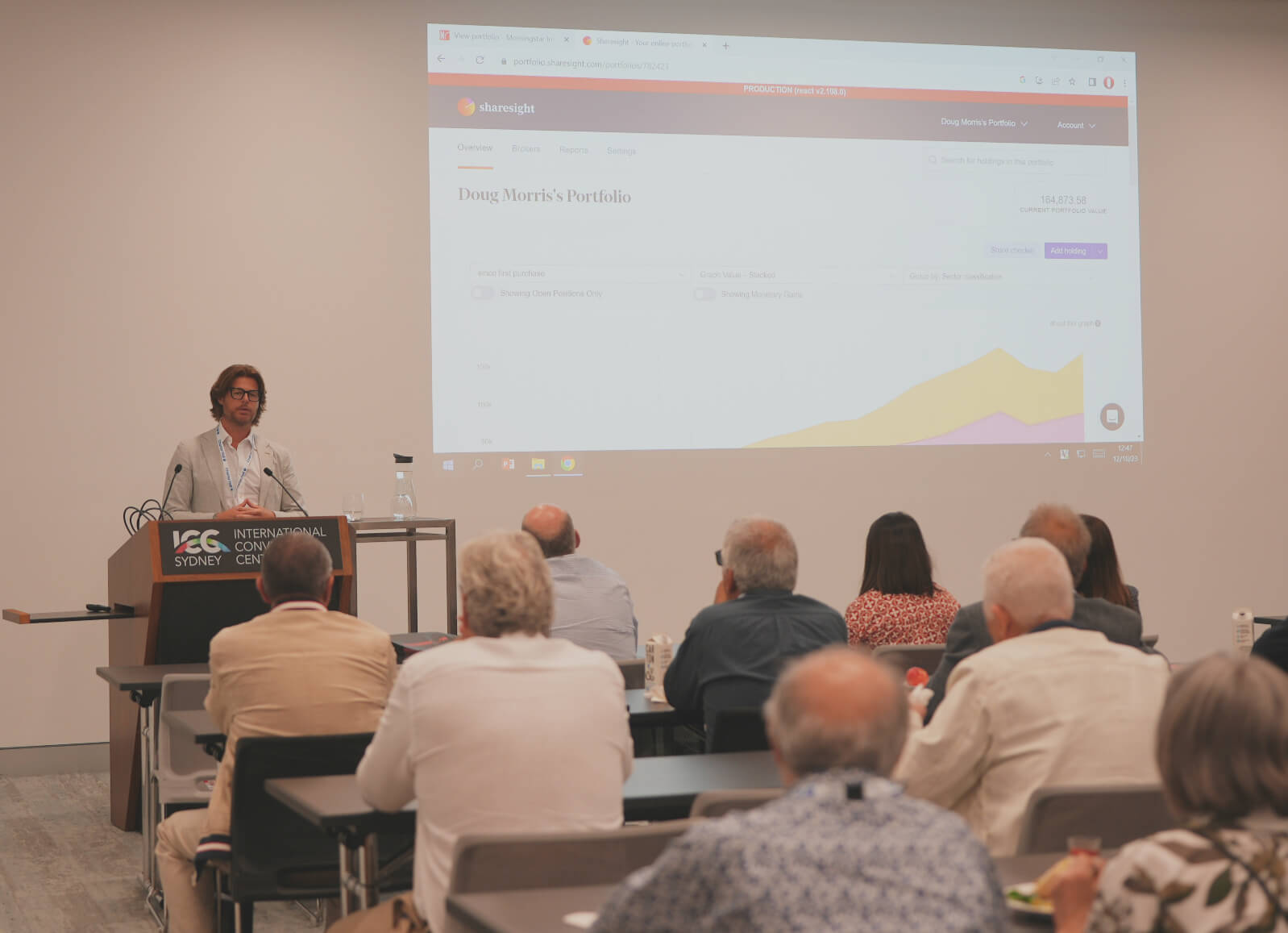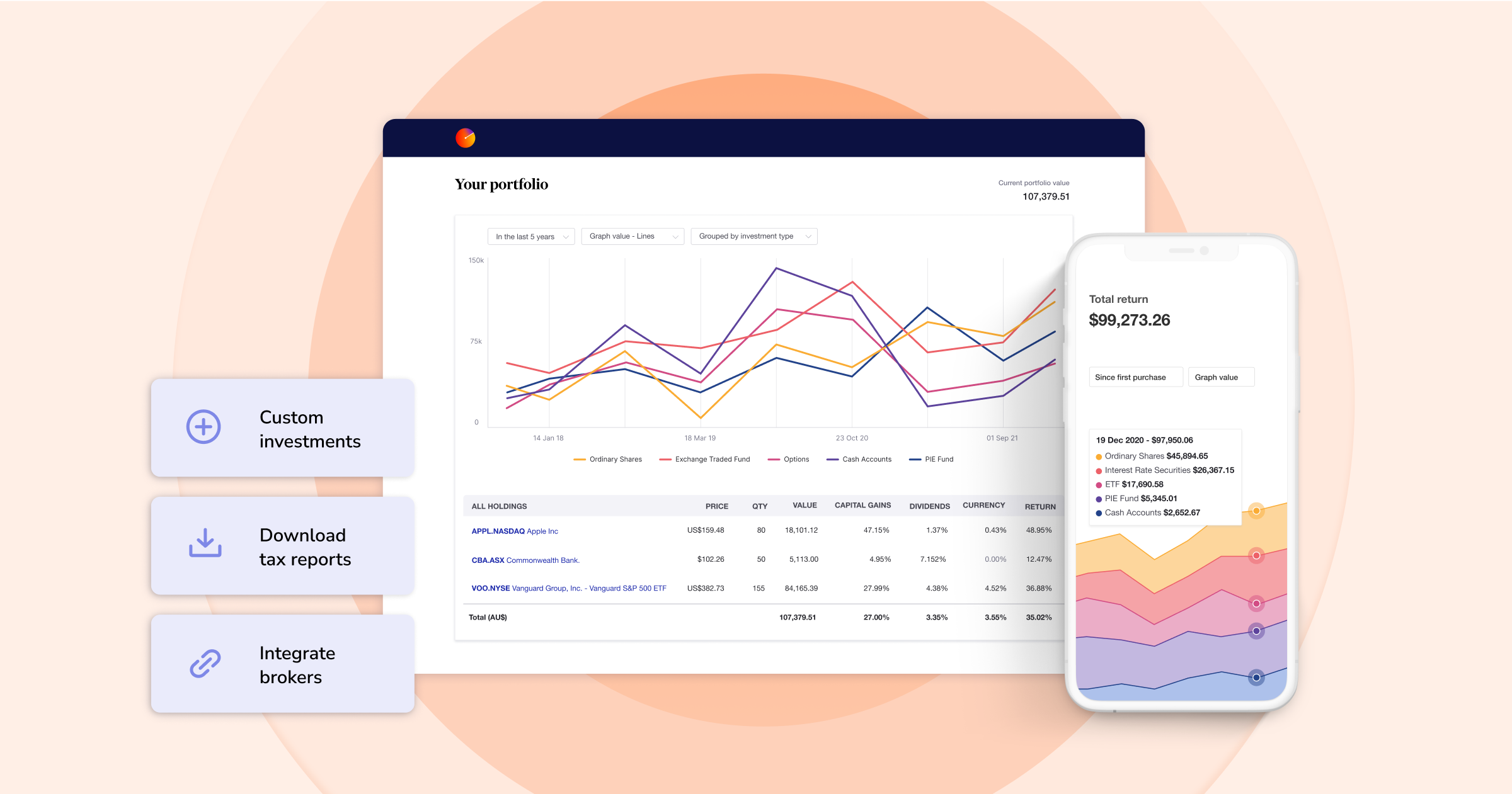Event recap: Morningstar Conference for Individual Investors 2023
Disclaimer: This article is for informational purposes only and does not constitute a specific product recommendation, or taxation or financial advice and should not be relied upon as such. While we use reasonable endeavours to keep the information up-to-date, we make no representation that any information is accurate or up-to-date. If you choose to make use of the content in this article, you do so at your own risk. To the extent permitted by law, we do not assume any responsibility or liability arising from or connected with your use or reliance on the content on our site. Please check with your adviser or accountant to obtain the correct advice for your situation.
We recently had the pleasure of attending Morningstar’s 2023 Conference for Individual Investors, which was largely themed around rising interest rates and their impact on investors. Some of the highlights for us were the opportunity for our CEO Doug Morris to give a demo of Sharesight, as well as the chance to meet so many enthusiastic investors looking to get started tracking their investments with Sharesight.

Sharesight team members Prashant Mohan, Hemangi Dharmadhikari and Roshan Shrestha at our booth at this year’s Individual Investor Conference.

Sharesight CEO Doug Morris showing investors how they can use Sharesight to get a clear view of their performance and make informed decisions about their portfolio.
A big thanks to Morningstar for putting on a fantastic event, and for those who could not attend, here is a summary of some of the best talks we attended at this year’s conference.
The impact of lower returns on investors
Mark LaMonica, Morningstar
- Previously we bought growth assets in the TINA (there is no alternative) period. Now it’s more like TALA (there are lots of alternatives) and this changes how we think of investing. Future cash flows are worth less so our assets are worth less, and we need to consider future cash flow against what we get for free (savings, term deposit)
- Many global investors are deciding to buy bonds and sell shares
- At the moment employment is still high and asset prices are still high. It’s hard to argue that those in the upper income bracket are hurting, as indicated by the fact that their consumer spending isn’t down yet
- The only way to slow this consumer spending is via declining asset values
- In a lower return world, the biggest impact you can make to your portfolio’s total returns is to change your behaviour. Remember that you are buying businesses and seek to invest in companies that are more resilient.
Are we in store for lower future returns?
Matt Wacher, Morningstar
- Generating wealth above inflation is key for any investor
- We’re in a better place than we were 18 months ago but you still need to be very discerning about the assets you own
- How can investors achieve their goals? Consider your objectives and know how to get there with your strategy
- We can’t rely on macro forecasting as it tends to be inaccurate. At Morningstar we rely on fair value because markets fluctuate but they always return to fundamentals
- We’re in a period where you need some active management to generate wealth over the next period. Static and passive management will not get you to your goals. Markets aren’t static, so investors shouldn’t be
- Bond yields are much higher, making bonds an alternative to equities. Fixed income has also re-emerged as a viable asset class
- We see opportunities outside of the US. Emerging markets, the UK and Asia-ex Japan are all expected to deliver the most attractive prospective returns
- Expectations towards emerging markets remain bearish
- Chinese equities are reasonably valued now albeit high risk
- Alibaba is trading at 2016 prices, despite improved fundamentals. This is an opportunity.
Returns in an evolving economic environment
Diana Mousina, AMP
- The inflation rate is a lagging economic indicator. We think that global inflation pressures have rolled over and central banks may be able to generate a “soft landing”
- There might be only one or two more rate rises from central banks. For example, the US doesn’t need to raise rates further. They are comfortable with where they are for now, which is a good sign
- The 40-year declining trend in inflation and bond yields could be over
- As yields rise it indicates downside risks for shares in the short-term
- In the past 1-2 months there have been signs that inflation is creeping up again. Oil prices are up, there are higher food prices and we are going into El Niño.
- In the medium-term you should still have some exposure to growth assets. Earnings growth is still holding up quite well and there are still elevated P/E ratios for those top seven (US) stocks.
- In the medium-term we could still see some returns from shares but the short-term outlook for shares is still rocky
- Mortgage-holders have had to adjust their spending. Around 13% of variable rate mortgage holders are in negative cashflow. At the same time, we are only 40% through the fixed mortgage rate cliff
- We still have very high levels of accumulated savings in Australia, whereas the US has an estimated 70% of theirs
- It’s mostly over-55s who have savings. People who took out mortgages over the past 1-5 years are under the most stress
- Our population growth is helping prop up GDP. We expect GDP won’t grow much next year and employment will be lower
- There’s still a risk of another rate rise before the end of the year. AMP thinks there will be some rate cuts from June next year (three rate cuts) and similar for the US.
The investing world according to Vanguard
Duncan Burns, Vanguard
- We expect the Australian economy to achieve a 2% inflation rate at the tail end of 2024 or 2025
- We think there will be one or two more rate rises from here onward, and rates will be higher for longer
- There’s a 40% chance of a recession here in the next 12 months. This figure is 80% for the US and 90% for Europe
- Australian equities: Expectation of 4-6% annual return over the next decade
- It’s important to reduce your risk exposure as you age. Vanguard has a product that automatically does that. There is the saying that you should “own your age in bonds”. This product is like a glide path — a smoother de-risking product. Avoids sequence of returns risk
- 60% of active managers fail to beat the benchmark (in Australia and worldwide). For longer time horizons (3-5 years) in Australia that figure is 80%
- Passive management beats active management due to cost
- But it’s not about active vs. passive — ⅓ of Vanguard assets are under active management. It’s about high-cost vs. low-cost
- It’s so important to rebalance regularly and get your portfolio back to a 60/40 split
- Always look beyond the name of your ETFs — you need to look inside them
- Remember that market timing is not a strategy for building wealth.
Maximising longevity of a portfolio in a low-return environment
Jody Fitzgerald, Morningstar
- Equities have performed well despite so much bad economic news — until recently. Markets have re-adjusted their expectations on recession to a “soft landing” or “no landing” (no recession).
- Bond yields are at a 16-year high
- Assets were rallying in the past because people thought rates would calm down but now they’re expecting rates to be higher for longer
- High rates open up income opportunities that haven’t been seen in years (aka. bonds)
- The challenge for investors is to generate attractive returns while preserving capital during volatility
- The value of an asset is its cashflow and ability to generate cashflow. Intrinsic value is the key to successful investing
- The market fundamentally overvalues and undervalues assets frequently. Volatility creates an opportunity for long-term increases as we can find undervalued assets
- Concerns in a low-return environment: Inflation, 70/30 vs. 60/40, diversification of equities, role of foreign currency, alternatives, valuation-driven asset allocation, implications for passive management.
Track your investment performance with Sharesight
If you’re not already using Sharesight, what are you waiting for? Join hundreds of thousands of investors using Sharesight to see the true performance of their investments. Sign up and:
- Track all your investments in one place, including stocks in over 40 major global markets, mutual/managed funds, property, and even cryptocurrency
- Automatically track your dividend and distribution income from stocks, ETFs and mutual/managed funds
- Run powerful reports built for investors, including performance, portfolio diversity, contribution analysis, multi-period, multi-currency valuation and future income (upcoming dividends)
- Get the true picture of your investment performance, including the impact of brokerage fees, dividends, and capital gains with Sharesight’s annualised performance calculation methodology
Sign up for a FREE Sharesight account to start tracking your performance (and tax) today!

FURTHER READING

You can time the market – and ETFs are the way to do it
Marcus Today founder and director Marcus Padley discusses timing the market, and how investors can do this using exchange-traded funds (ETFs).

Morningstar analyses Australian investors’ top trades: Q1 2025
Morningstar reviews the top 20 trades by Australian Sharesight users in Q1 2025, and reveals where their analysts see potential opportunities.

Sharesight product updates – April 2025
This month's focus was on improving cash account syncing, revamping the future income report and enabling Apple login functionality.